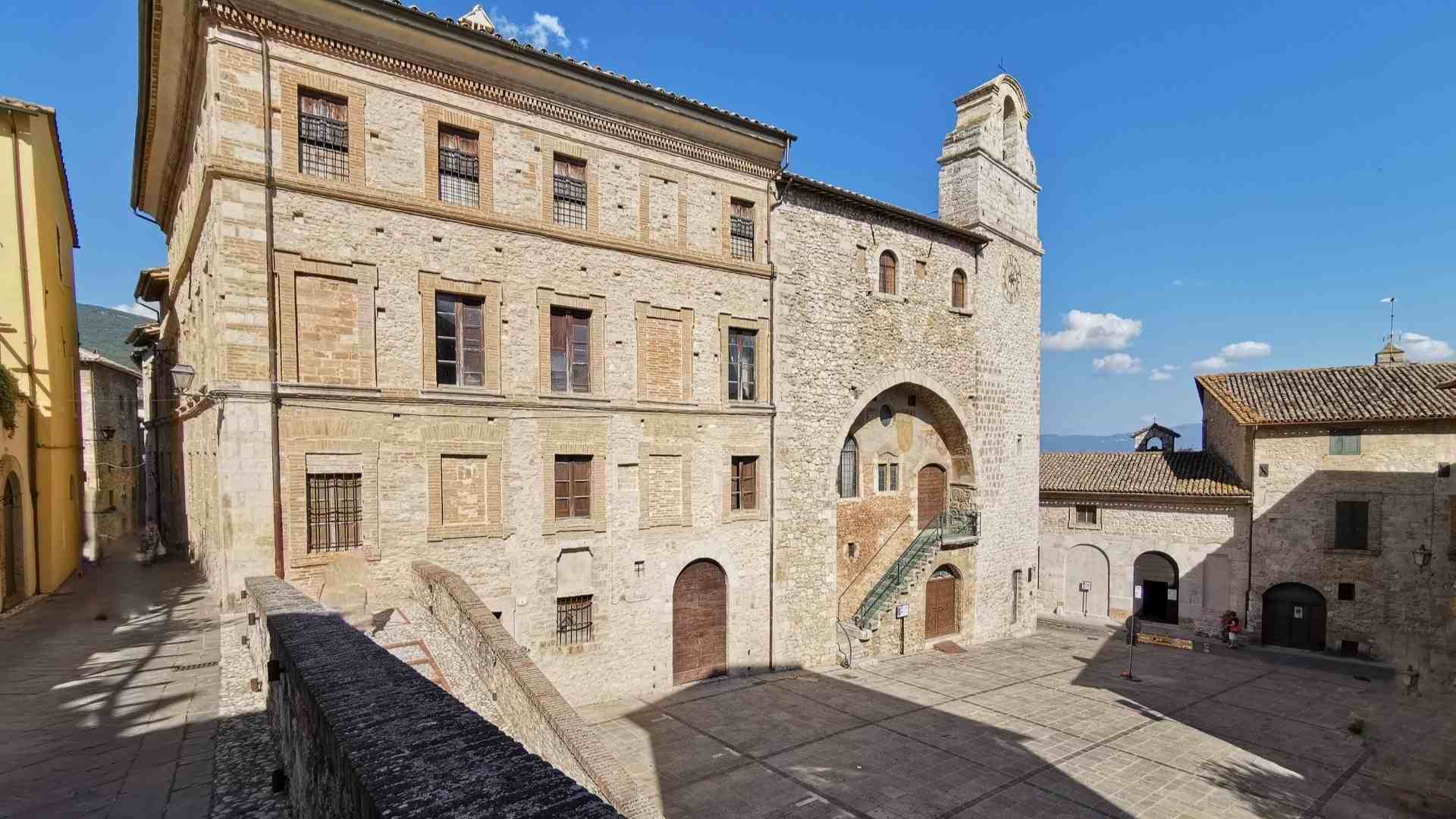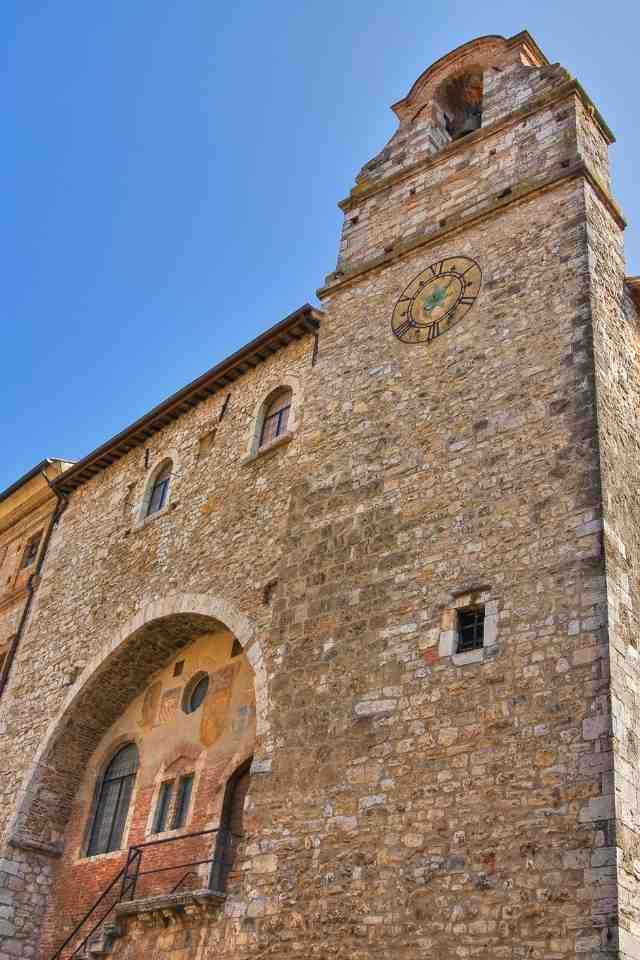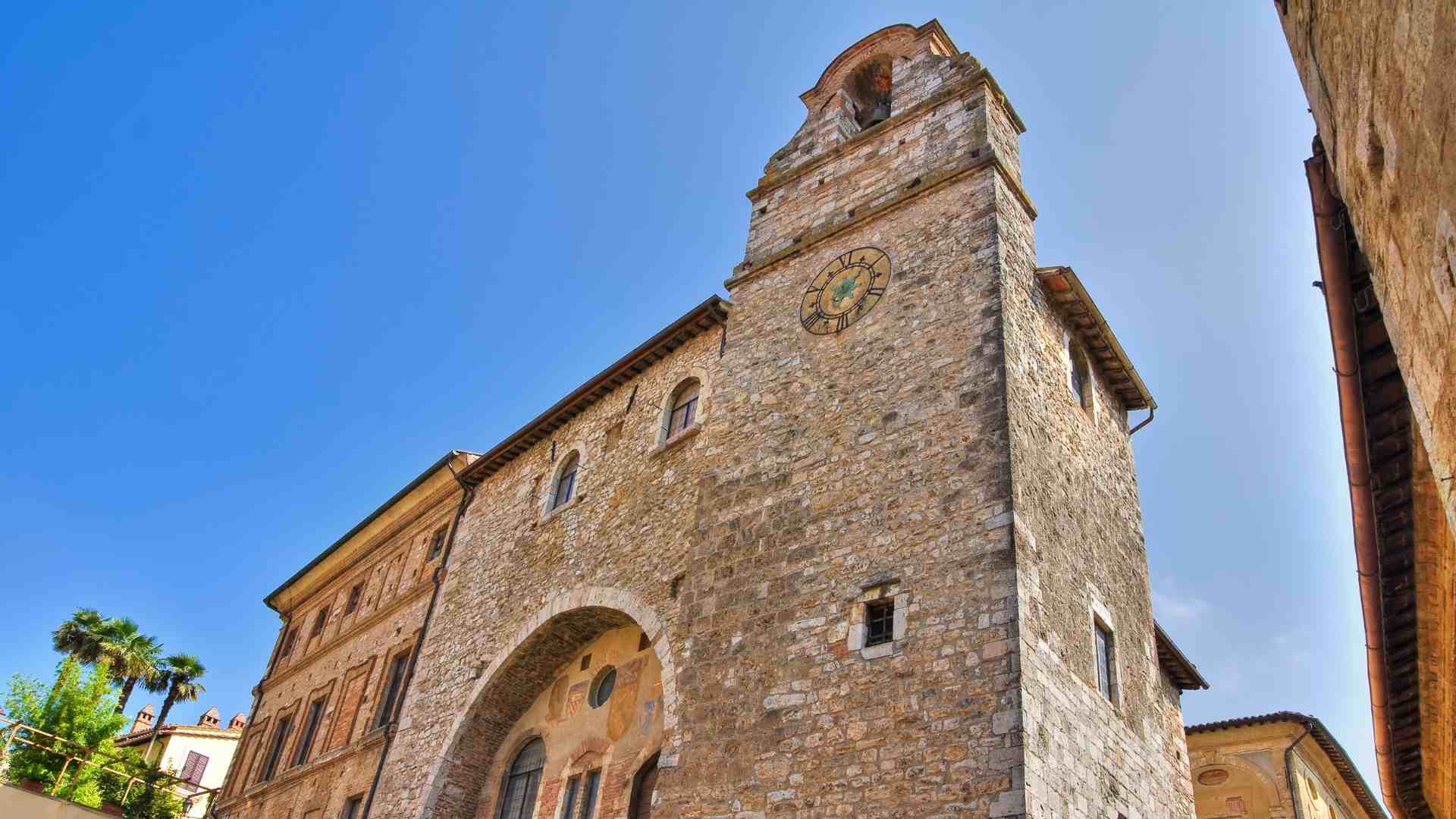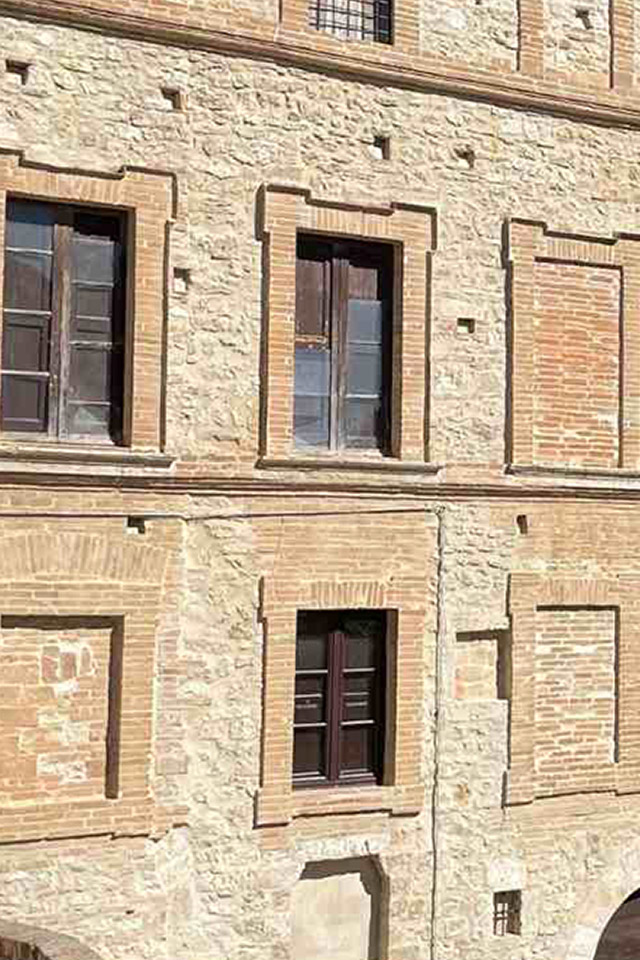
punto di interesse
point of interest


The amministrative heart of the medieval and renaissance San Gemini must was Palazzo Vecchio square, headquarter of Palazzo Pretorio, better known like Palazzo Vecchio.
Symbol and ancient headquarters of the free Municipality of San Gemini and in gothic style, Palazzo Vecchio was built around the end of the XII century and hosted the government of the Potestà, becoming the symbol of the civic power of the city.
The facade with a big semicircular arch and the monumental staircase made in rock, which takes to the first floor of the structure, guards the coats of arms of Eugenio IV and of the Orsini family.
The palace is place between two other important structures:

The amministrative heart of the medieval and renaissance San Gemini must was Palazzo Vecchio square, headquarter of Palazzo Pretorio, better known like Palazzo Vecchio.
Symbol and ancient headquarters of the free Municipality of San Gemini and in gothic style, Palazzo Vecchio was built around the end of the XII century and hosted the government of the Potestà, becoming the symbol of the civic power of the city.
The facade with a big semicircular arch and the monumental staircase made in rock, which takes to the first floor of the structure, guards the coats of arms of Eugenio IV and of the Orsini family.
The palace is place between two other important structures:

All’interno, particolari sono i dipinti che rappresentano cicli di lavori rurali, come la vendemmia, la raccolta del ficus e la pigiatura dell’uva, e allusive scene di buon governo.
On the opposite wall is possible to see those who were the coats of arms of the Podestà , like that of Giovanni from Montenegro of 1482.

All’interno, particolari sono i dipinti che rappresentano cicli di lavori rurali, come la vendemmia, la raccolta del ficus e la pigiatura dell’uva, e allusive scene di buon governo.
On the opposite wall is possible to see those who were the coats of arms of the Podestà , like that of Giovanni from Montenegro of 1482.

Characteristic is the clock “to roman” because in six numbers, like that which was in the Torre dell’Orologio of Attigliano, adopted by the church at the end of the XIII century and then spread between the XVII and the XVIII century.
Had the function of indicating, with the sound of the bell, the ancient Italian hours: the misuration of the time started from the Ave Maria of the evening, just after the sunset and not from midnight.
The mechanism is working through a system of counterweights called “scale of the time”.
discover all the points of interest of the village
Information, appointments and travel proposals on:
The Progressive Web App is part of the project “Le Terre dei Borghi Verdi”, realized in collaboration and with the contribution of Regione Umbria – Assessorato al Turismo
©2021 Le Terre dei Borghi Verdi
Le Terre dei Borghi Verdi
Welcome in Southern Umbria,
where the slowness becomes value
Information, appointments and travel proposals on:
The Progressive Web App is part of the project “Le Terre dei Borghi Verdi”, realized in collaboration and with the contribution of Regione Umbria – Assessorato al Turismo
©2021 Le Terre dei Borghi Verdi